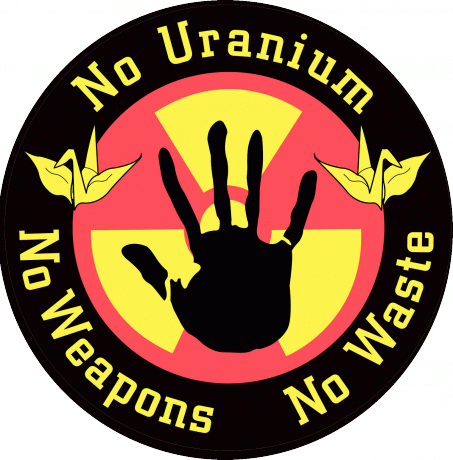Features
You are here
G.E. uranium processing out of our neighbourhood

November 16, 2012
Residents of Lansdowne-Davenport, on the west side of Toronto, were surprised to learn a few weeks ago that we have a uranium processing facility down the street.
The GE-Hitachi plant at 1025 Lansdowne is an innocuous-looking brick building, just north of the CP rail tracks, which blends into an industrial landscape rapidly being converted to residential. Until 1980 the entire area south of Davenport and north of the tracks was occupied by a massive Canadian General Electric plant. It has been rezoned residential, and is being redeveloped into hundreds of townhouses, lofts, etc.
GE, one of the oldest and largest U.S. companies, was founded in 1890 by financier J.P Morgan, using patents of inventor Thomas Edison. It has 300,000 employees in 150 countries, with $4.2 billion in profits last year. Though historically a manufacturing company, its financial services division now accounts for over half its profits.
GE is the largest designer and manufacturer of nuclear components in the world (including the six Fukushima reactors.) Since 1955 GE has partnered in the development of the CANDU reactor, and currently fuels all CANDU reactors. Since 1965 its Lansdowne plant has been processing uranium oxide into nuclear pellets, which are then shipped to Peterborough for insertion into nuclear fuel rods. Years ago there used to be a nuclear symbol outside the Lansdowne plant, indicating danger of radiation, but the symbol is no longer to be seen.
Nowadays the plant, which employs 53, is operated by GE Hitachi, a joint venture of the two giant engineering firms begun in 2007. GE Hitachi describes itself as a provider of advanced reactors and nuclear services.
The Lansdowne plant is inspected by the Canadian Nuclear Safety Commission, which has always given it a pass. The company maintains that all its radioactive emissions, whether airborne or through the sewer system, are well within allowable limits. In 2010 the company applied for and received a 10-year renewal of its license to operate its Lansdowne and Peterborough plants.
Secret and unsafe
Flags were raised about the Toronto plant by Peterborough activists, who noted that while 50 people from their community attended the licensing hearings, there was no one from Toronto. An enquiry among neighbours of the Toronto plant revealed that nobody knew 1,800 tons of radioactive material is being processed each year in our community.
This in spite of the fact that GE Hitachi was supposed to make people in the neighbourhood aware of their renewal application. Only after residents organized their own community forum did GE hold public events, and these are designed to dismiss safety concerns.
“Frankly, nothing has gone wrong in 50 years,” said a spokesperson, while the plant’s manager of environment, health and safety said “it’s a similar technology that goes into making pharmaceuticals, like Aspirin.”
But past safety doesn’t safeguard the future, and unlike spilling aspirin a nuclear disaster has catastrophic consequences. The same safety claims were made about Japan’s nuclear reactor, before Fukushima was flooded with radioactive waste. Renowned physician Dr. Helen Caldicott says such a plant should not be located in a residential area, and the least a highly profitable company could do would be to relocate its plant.
Not ‘green’
The nuclear industry claims it’s a “green” technology that provides an alternative to fossil fuels. But as Caldicot points out: “Nuclear power is not ‘clean and green,’ as the industry claims, because large amounts of traditional fossil fuels are required to mine and refine the uranium needed to run nuclear power reactors, to construct the massive concrete reactor buildings, and to transport and store the toxic radioactive waste created by the nuclear process. Burning of this fossil fuel emits significant quantities of carbon dioxide.”
Furthermore, the nuclear industry is associated with the military. While Iran is threatened with war over fictitious claims it has nuclear weapons, the US has nuclear weapons and is spreading them, As Indian physicist and environmentalist Vandana Shiva warned:
“They are turning India into a nuclear market: a sale of nuclear technologies, of nuclear fuel… Not only will it spread nuclear risks and hazards in India, it will also allow corporations, like General Electric and others who pollute with carbon dioxide and get quotas through emissions trading and markets for nuclear technology.”
It is not our “lifestyle” or jobs that are driving the nuclear industry, but profits. We can collectively reduce energy use and transition away from both oil and nuclear, if we demand good green jobs and fight for a world that puts people and the planet above profit.
Section:
Topics:










